QuestionHello, Christy. We have had a 10-cent goldfish, bought from WalMart, in a minor, maybe one-gallon NO FILTER tank. Having always heard rumors that fish die if you look at them funny, I never expected this fish to live for a year! So now he has not only become a member of the family, but he is getting big, and I have decided to transfer him into an 5 gallon tank, with filter and all the attributes of rock, cute decorations, etc. Previously, I had been cleaning his tank every 2-3 days to keep ammonia levels down, but now I am skeptical because he has been living in regular "tap water" between 69-78 degrees (usually 72-74), and now he will be in FILTERED water. Is this change going to harm him any? Should I add him immediately into the new tank or wait a certain number of time before adding him? Do I include all the water he is currently in when I make the transfer? Do I need to test ammonia/nitrate levels first?
Thank you for your help. The only one other time in my life I transferred a fish from one tank to another, it died immediately. :-( I do not want to make this mistake again!
Thank you so much!
AnswerHi Jamie
I have a suggestion for you. Those cheap 10 cent goldies have the ability to grow to about 12-18+ inches :) It's usually recommended to have at least 15 gallons for one goldie. If you can't afford a 20 gallon tank, at least get the 10 gallon as opposed to the 5 gallon. Walmart has a basic 10 gallon set up-cheaper then the 5 gallon set up, for about 29.00. They do have a 29 gallon set up, but that's up there in price, think around 60.00. You will end up stunting the fish in the 5 gallon for sure. I would also do away with a lot of the decorations, try to keep as much swimming area for him as possible.
Now, on to your question. You want to make sure you're using a dechlorinator for your tap water-unless you're on well water. City water they add chlorine and/or chloramines to the water, so you definitely want to use something to remove those when you first set up the tank and when you do water changes.
When you first start up a filtered tank, it needs to go through what's called a cycle process. Basically, fish put out ammonia(and goldfish put out a lot) through their breathing and waste, and any uneaten food left in the tank puts out ammonia. Beneficial bacteria develops, which converts ammonia into nitrites. Ammonia and nitrites are very toxic to fish, and can kill them. Eventually, the bacteria converts the nitrites into nitrates. When your ammonia and nitrite levels are reading 0 ppm and there's nitrates showing up, your tank is cycled. To keep the water quality good after it's cycled, you'll want to do weekly water changes of about 25%, using a gravel vacuum/syphon to clean the gravel as well. That's pretty much all the maintenance you'll need to do. Here's a link, has an article on how a tank cycles, there's also an article on ammonia and nitrite poisoning symptoms to read as well:
http://freshaquarium.about.com/od/startupcycle/Step_5_The_Cycle.htm
Since you already have the fish, you're probably best to do what's called a fish cycle(as opposed to a fishless cycle). It'll probably be easiest to set the new tank up, let everything settle in there. Remove some of the water from the old tank, and add a little bit of the new tank water to the old tank with the fish. This will help him adjust in case the temperature or the ph is off from the current tank. Take your time, at least a good 30-60 minutes of letting him adjust and adding the new tank water to the old tank. Then go ahead and add him to the new tank. You can go ahead and use the old water as well to the new tank, just dump it all in together.
Now, while the tank is going through that cycle process, you'll need to do daily water changes until it's done cycling-usually about 4-8 weeks. This will help him survive by diluting the toxins in the water. I'd recommend picking up a test kit that tests for ammonia, nitrites, nitrates, and ph. You won't to test the levels first, those will take a few days to show up in the new tank. Then, you'll need to check them pretty regularly.
I think that covered everything, if not or if you have more questions along the way, let me know! GOod luck!
Christy

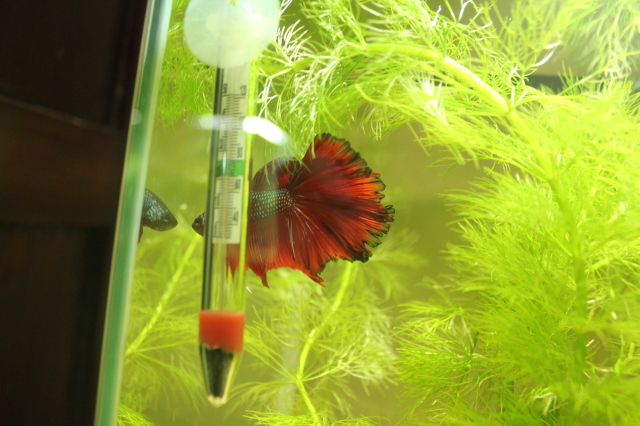 Melafix
QuestionHis back fin
QUESTION: Hi,
Its alex aga
Melafix
QuestionHis back fin
QUESTION: Hi,
Its alex aga
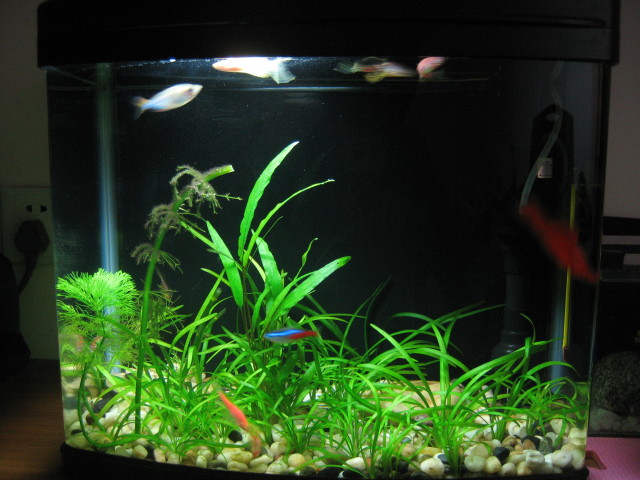 Tiny white organisms in my tank
Question
Fish tank
Hi Jaymie,
I recently found out some
Tiny white organisms in my tank
Question
Fish tank
Hi Jaymie,
I recently found out some
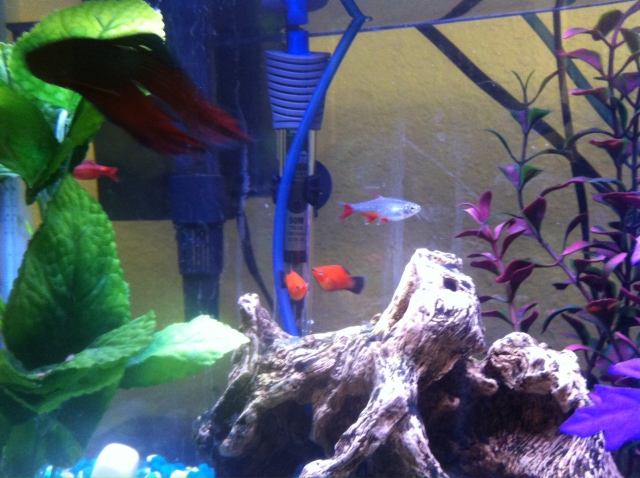 Question re tank mates
Question
White Cloud Minnow?
Hi and thanks for t
Question re tank mates
Question
White Cloud Minnow?
Hi and thanks for t
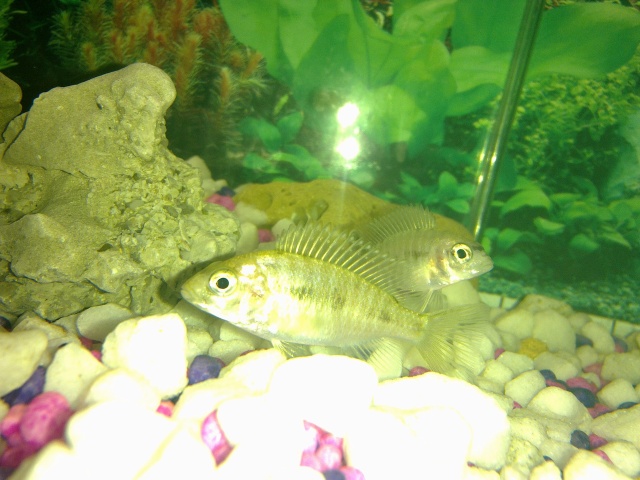 malawis
Question
two malawis
how do u knw what kind of malawi y
malawis
Question
two malawis
how do u knw what kind of malawi y
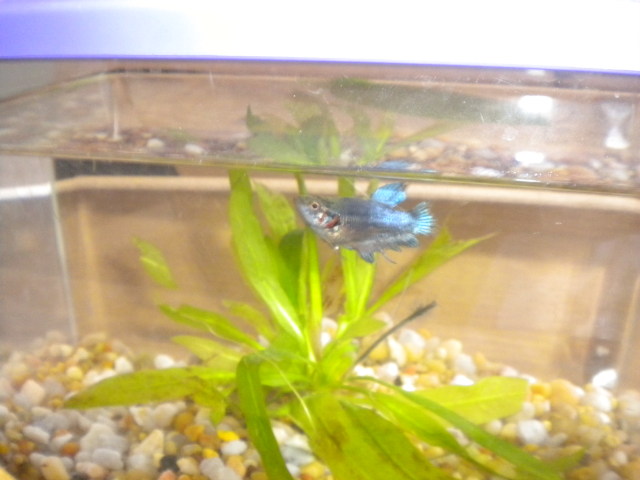 my betta...
Question
sapphira- female betta
MY female betta is swol
my betta...
Question
sapphira- female betta
MY female betta is swol